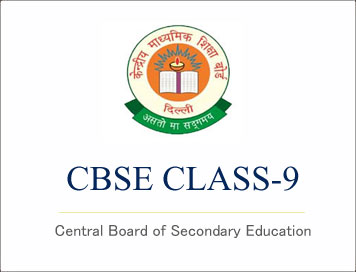
CBSE Class-9 Syllabus 2018-19 (Carnatic Music)
CARNATIC MUSIC (VOCAL) Theory
Syllabus for Class IX
Periods: 135
Marks: 25
I. Brief history of Carnatic Music with special reference to Saint Purandara dasa, Annamacharya, Bhadrachala Ramadasa, Saint Tyagaraja, Muthuswamy Dikshitar, Syama Shastry and Swati Tirunal.
II. Definition of the following terms:
Sangeetam, Nada, raga, laya, Tala, Dhatu, Mathu, Sruti, Alankara, Arohana, Avarohana, Graha (Sama, Atita, Anagata), Svara – Prakruti & Vikriti Svaras, Poorvanga & Uttaranga, Sthayi, vadi, Samvadi, Anuvadi & Vivadi Svara – Amsa, Nyasa and Jeeva.
III. Brief raga lakshanas of Mohanam, Hamsadhvani, Malahari, Sankarabharanam, Mayamalavagoula, Bilahari, khamas, Kharaharapriya, Kalyani, Abhogi & Hindolam.
IV. Brief knowledge about the musical forms.
Geetam, Svarajati, Svara Exercises, Alankaras, Varnam, Jatisvaram, Kirtana & Kriti.
V. Description of following Talas:
Adi – Single & Double Kalai, Roopakam,
Chapu – Tisra, Misra & Khanda and Sooladi Sapta Talas.
CARNATIC MUSIC (VOCAL) Theory
Format of Written Examination for Class IX
25 Marks
1. Long Answer (Essay)
a. Biography 05 Marks
b. Musical Forms 05 Marks
Short Answers with Examples
c. Writing of minimum three Raga-lakshana from prescribed list in the syllabus. 05 Marks
d. Description of talas, illustrating with examples. 05 Marks
e. Short notes of minimum 05 technical terms from the topic II. 05 Marks
Note: - Examiners should set atleast seven questions in total and the students should answer five questions from them, including two Essays, two short answer and short notes questions based on technical terms (topic - II) will be compulsory.
CARNATIC MUSIC (VOCAL) Practical
Syllabus for Class IX
Periods: 405
Marks: 75
I. Vocal exercises – Svaravalis, Hechchu and Taggu Sthayi, Alankaras in three degrees of speed.
II. Simple Geetams – Two Pillari Gitams, two Sadharana Geetams or Sanchari Geetams.
III. Simple Svarajatis in Khamas and Bilahari raga.
IV. Four Adi tala Varnams in two degrees of speed.
V. 6 Keertanas in the ragas prescribed.
VI. Svarajnanam test in the prescribed ragas and learnt compositions.
VII. Singing of one Devarnama, one Patriotic song, one Tiruppugazh and one folk song.
CARNATIC MUSIC (VOCAL) Theory
Format of Practical Examination for Class IX
Marks: 75
1. Questions based on vocal exercises in three degrees of speed. 10 Marks
2. Geetam – At least two from the syllabus 10 Marks
3. Questions based on Swarajatis taught. 10 Marks
4. Singing of Varnams in two degrees of speed. 15 Marks
5. Questions based on Keertanas learnt. 20 Marks
a. Rendering of Kirtana
b. Swarajnanam test
c. Details of the ragas
6. Singing of one or two item from the topic VI 10 Marks